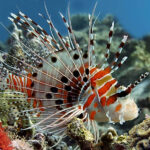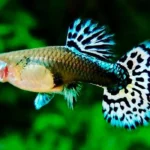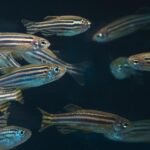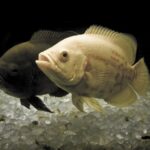When Tragedy Strikes the Tank
Fish Are Dying There’s nothing worse for a fish keeper than going over to your tank and looking down to find a lifeless corpse bobbing on the surface. It doesn’t matter if it’s your prized betta, a whole school of tetras, or that pricey angelfish you added last week—losing fish is traumatic.
But the fish are dying thing is this: fish don’t die “at random.” There’s always a cause. And once you know the most common causes of fish death, you can prevent them from occurring again. This article goes in-depth on the number one reason why fish are dying in home aquariums and, more importantly, what you can do to remedy them.

Fish are dying Poor Water Quality: The Silent Killer
Why It Happens
The single most common cause of fish loss is water quality. Fish inhale, swallow, and eliminate in water, so when their environment becomes contaminated, it takes a toll on all aspects of their health.
Common Indicators of Bad Water
Cloudy water
Foul odor
Fish gasping at the surface
Sudden lethargy or unusual swimming patterns
What’s Actually Going Wrong?
Ammonia Spikes: Usually caused by overfeeding or too many fish in a new tank.
Nitrite/Nitrate Overload: These compounds stress and poison fish over time.
Uncycled Tank: A tank without beneficial bacteria can’t break down waste.
Incorrect ph Levels: Fish have specific ph preferences.
The Fix
Test your water frequently with a liquid test kit.
Perform regular water changes (20–30% weekly).
Avoid overfeeding—only feed what your fish can consume in 2 minutes.
Make sure your tank is fully cycled before adding fish.
New Tank Syndrome: Deadly for Beginners
What Is It?
New tank syndrome is the imbalance in a newly established aquarium when the nitrogen cycle has not been fully developed. Ammonia and nitrite build up quickly, making it a lethal environment.
How It Happens
Adding too many fish at once
Not giving beneficial bacteria enough time to grow
Over-cleaning or changing filter media too often
Warning Signs
Fish are dying within the first few weeks
Ammonia/nitrite readings above 0 ppm
Fish hanging near the surface or with clamped fins
The Fix
Cycle your aquarium properly before adding fish.
Use a bacteria supplement if you’re jump-starting a tank.
Introduce fish slowly and in small batches.
Never rinse filter media in tap water—use tank water instead.
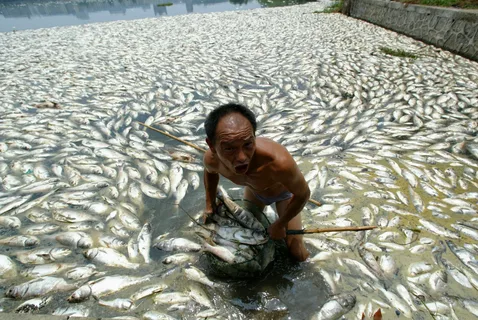
Stress: The Invisible Predator
Fish might not seem to get emotional, but they do sense stress in extremely real, biological terms. Persistent stress degrades their immune system, exposing them to illness and early mortality.
Causes of Stress
Poor water conditions
Overcrowding
Aggressive tank mates
Sudden temperature changes
Excessive noise or vibrations
Symptoms of Stressed Fish
Hiding constantly
Loss of appetite
Faded colors
Erratic swimming
Disease outbreaks
The Fix
Maintain stable water parameters.
Research fish compatibility.
Use tank décor and plants for hiding spots.
Keep the tank away from loud environments.
Disease and Parasites: The Unseen Threat
Common Diseases
Ich (white spot): White grains on skin/fins
Fin Rot: Shredded, discoloured fins
Velvet: Dusty gold coating
Columnaris: White patches and open sores
Why Diseases Spread
Poor water quality
Stress
Lack of quarantine for new fish
Contaminated equipment
The Fix
Quarantine new fish for at least 2 weeks.
Use separate equipment for quarantine tanks.
Treat with appropriate medications (copper, salt, antibiotics).
Boost immunity with garlic-based foods and vitamins.
Incompatible Tank Mates: War in the Water
Common Mistakes
Keeping bettas with fin-nippers
Housing cichlids with peaceful fish
Overstocking community tanks
Ignoring size differences (small fish may get eaten)
The Fix
Research compatibility before purchasing.
Provide lots of space and hiding spots.
Use tank dividers if needed.
Monitor behavior after introducing new fish.

Sudden Temperature Fluctuations
What Goes Wrong
No heater in a tropical tank
The tank is placed near windows or vents
Using hot or cold water during changes
Symptoms
Lethargy
Gasping
Shock
Death within hours in severe cases
The Fix
Use a reliable heater with a thermometer.
Match water temperatures during changes.
Keep tanks away from drafts or direct sunlight.
Lack of Oxygen: Gasping for Life
Causes
Overstocking
Poor surface agitation
Algae overgrowth
High temperatures (less oxygen dissolves)
Symptoms
Fish gasping at the surface
Staying near filter outputs or air stones
Lethargy and slow response
The Fix
Add air stones or a surface skimmer.
Reduce stock levels.
Increase water movement.
Avoid letting algae take over.
Chemical Contamination: The Hidden Poison
Common Contaminants
Soap residue on your hands
Cleaning sprays near the tank
Non-aquarium-safe decorations
Copper in tap water (especially deadly to inverts)
The Fix
Never use soap or cleaning products near the tank.
Wash hands thoroughly with water only.
Use a water conditioner to neutralise metals and chlorine.
Buy only products marked “aquarium safe.”
Lighting Mistakes and Sleep Disruption
Why It Matters
Constant light = no sleep = weakened immune system
Inconsistent light disrupts natural cycles
The Fix
Use a timer to maintain a consistent day/night cycle.
8–12 hours of light is usually enough.
Provide dark hiding spots or shade during the day.
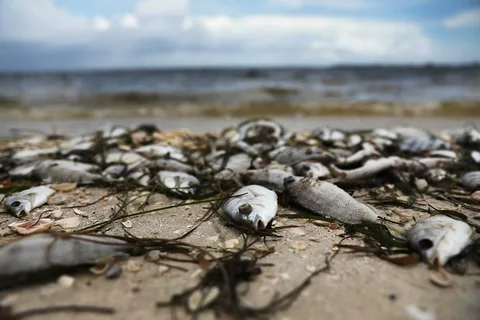
Conclusion
Fish Are Dying The agony of losing a fish affects every aquarist, novice or experienced. It is not a pastime; rather, it is a living world that depends on your care and dedication. Additionally, it is personal when something goes wrong.
But here’s the bright side: every fish are dying is a lesson. Perhaps it was an ammonia spike you weren’t expecting. Perhaps it was the incorrect tank mate, a forgotten heater, or a misacclimation. Whatever the reason, it’s an opportunity to learn—not only as an aquarist, but as a person responsible for life. Fishkeeping isn’t perfect. It’s a journey. With each test strip, water change, or article you read (such as this one), you’re improving.
Fish are dying. With knowledge, patience, and heart, you’ve made a glass box of water a living world.
FAQs
Why are my fish are dying suddenly overnight?
The sudden death of fish is usually caused by ammonia spikes, temperature fluctuations, or oxygen depletion. Test your water right away and see if your heater or filter has failed. If you have recently added new fish, shock or aggression is also a probable reason.
How do I know if my water quality is bad?
Monitor cloudy water, offensive odours, or gassy fish on the surface. Use a liquid test kit to monitor ammonia, nitrite, nitrate, and pH. Anything over 0 ppm for ammonia or nitrite is harmful.
Can overfeeding cause the fish are dying?
Yes. Fish are dying. Overfeeding creates leftover food, which rots and yields toxic waste. This can burst ammonia to burst and cause illnesses such as bloat or constipation. Give only what your fish can consume within 1–2 minutes. fish are dying
How long should I cycle my tank before adding fish?
A complete nitrogen cycle should last 4–6 weeks. You should be able to observe ammonia increase, then nitrite form, and eventually nitrate before introducing fish. Use a test kit to monitor the process and introduce fish gradually after cycling is finished. Fish are dying
Should I quarantine new fish before adding them to my tank?
Fish are dying. Absolutely. Quarantine for 2 weeks keeps disease outbreaks out of your main tank. New fish might be carrying parasites, bacteria, or fungi—even if they appear healthy.
What temperature is best for tropical fish?
Most tropical fish prefer to swim between 75°F and 80°F (24–27°C). Research your species at all times, and employ a good aquarium heater with a thermometer to keep things stable.

